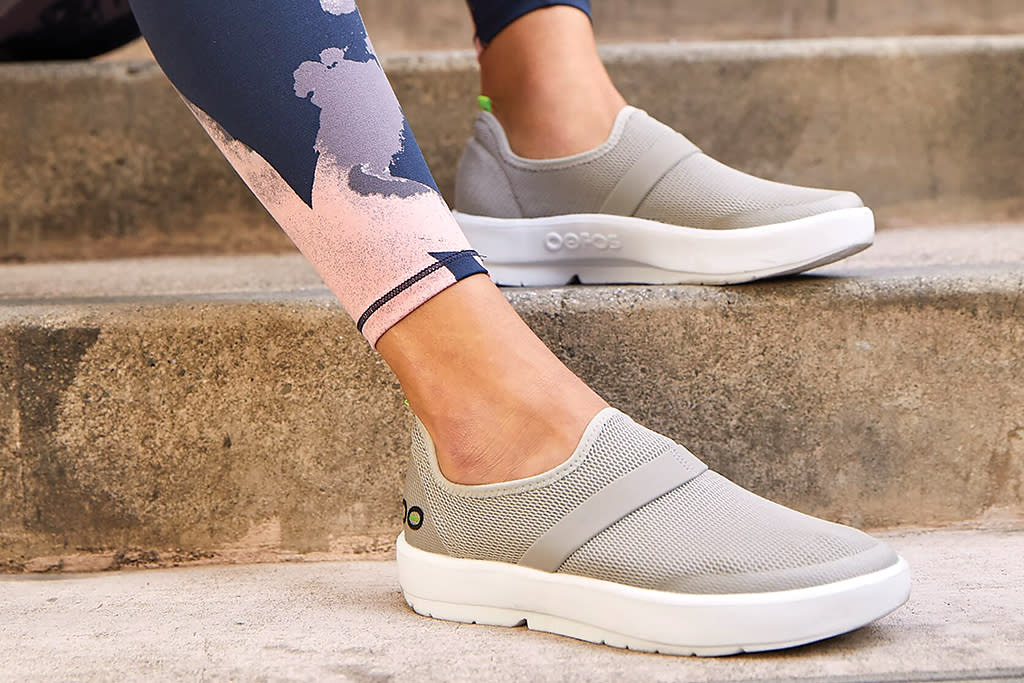What Makes a Good Recovery Shoe? Retailers and Podiatrists Weigh In

Finding the correct recovery shoe can be tricky.
The recovery footwear market is becoming increasingly competitive, with category leaders Kane Footwear, Oofos, Birkenstock and several others all delivering top-tier looks. Because of this, there are plenty of options to choose from, making it challenging to find a shoe that is tailored to a wearer’s needs. Thankfully, there are expert podiatrists and retailers that can lead shoppers in the right direction.
More from Footwear News
How Kenneth Cole, Birkenstock and Oofos Found a Place in the Booming Wellness Movement
Britney Spears Slips on 'Ugly Sandals' on a Plane With Sam Asghari
Oofos Completes Funding Round Led by Pro Athletes Derek Carr, Alex Smith and Dawn Staley
Below, insiders reveal the things recovery shoes must have to be considered top-tier.
NAJWA JAVED
Silicon Valley Podiatry Group; Founder, E’Mar Italy
“A recovery sandal is one that is not only comfortable because of the cushioned footbed but also provides stability and support throughout the foot and legs because of a special type of foam. Most cushioned-based shoes are too flexible and cause instability due to a lack of support, whereas a recovery sandal has a biomechanical foot bed that is resistant to compression in high pressure areas. They also have a rocker-type sole that allows for forward propulsion. There should also be a very stable sole that provides traction.”
DR. MARK MENDESZOON
Podiatrist; Owner, Achilles Running Shop
“A good recovery shoe is something that will be generally lightweight, have a wide toe box and a good arch filler to support the foot. Also, the foot bed typically has different pressure points or elevations on the materials to massage your feet and to stimulate trigger points and promote circulation. Top-end recovery shoes will have a wide toe box or wide forefoot so that the toes can move independently and not have a great deal of pressure placed on them.”
DR. DANIEL GELLER
Founder, Dr. Daniel Geller Sports Podiatry and Foot & Ankle Surgery
“A recovery shoe should be stable, meaning it should provide some support to ease overused joints, ligaments and muscles. Recovery starts the moment the athletic shoe comes off. It allows the foot and lower extremity muscles to relax and not be stressed. Proper cushion is next. More cushion is not necessarily better. In fact, more cushion could create an increase in energy expenditure during walking as well as an altered gait.”
KRIS HARTNER
Owner, Naperville Running Co.
“[Recovery shoes are] pretty much anything that’s quite different from whatever shoe you just wore that put you in a situation where you need to recover. For functional simplicity, sliding into a quality sandal like an Oofos or Birkenstock is an excellent option. If you just finished a workout wearing spikes or racing flats, switching back into your training shoes right away is perfectly fine and should help get you headed in the right direction.”
JEFF SEIDMAN
Owner, Ahh Comfort Shoes
“Most good recovery shoes are going to have a higher-than-average amount of shock absorbency. When you’re looking at Oofos, particularly, they have a strong arch and a lot of off-load for both the heel and the ball the foot. We would love to see a stable version in the recovery market. While they’re all nice and soft, some of them lack structure for people who supinate or pronate. If we were looking for the next version of a recovery shoe, it would be something that would be more laterally supportive.”
Best of Footwear News
Sign up for FN's Newsletter. For the latest news, follow us on Facebook, Twitter, and Instagram.

